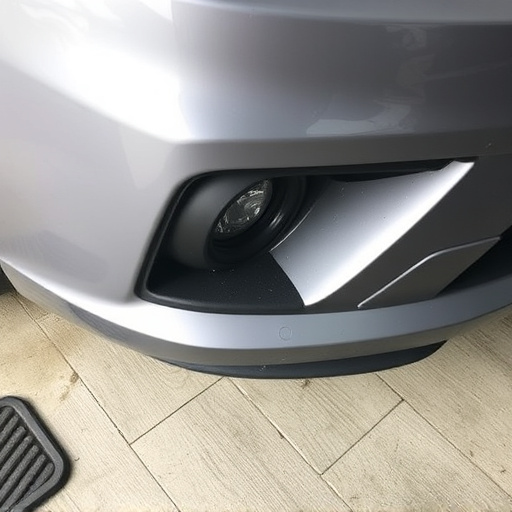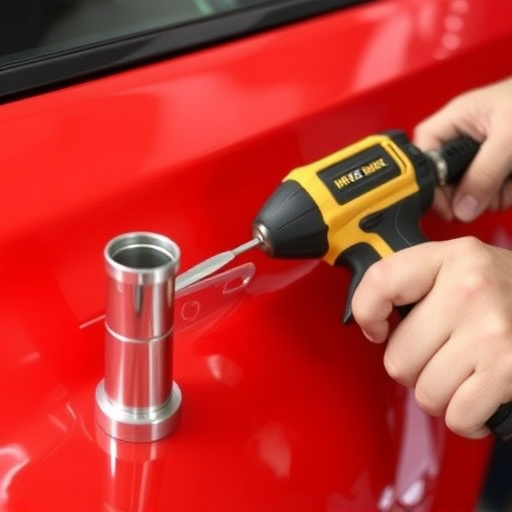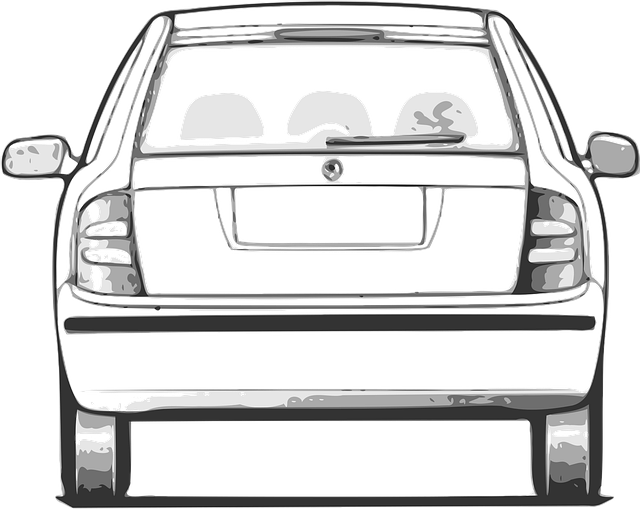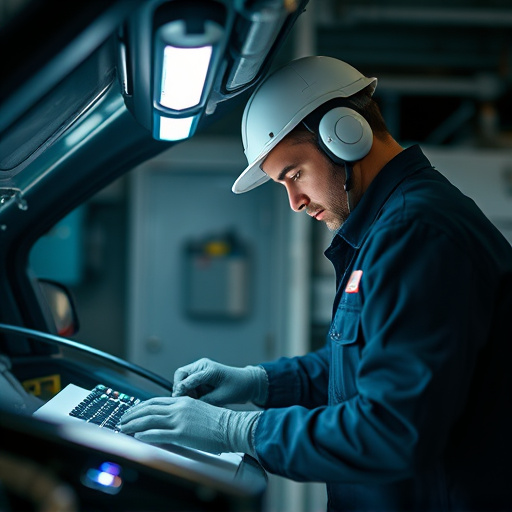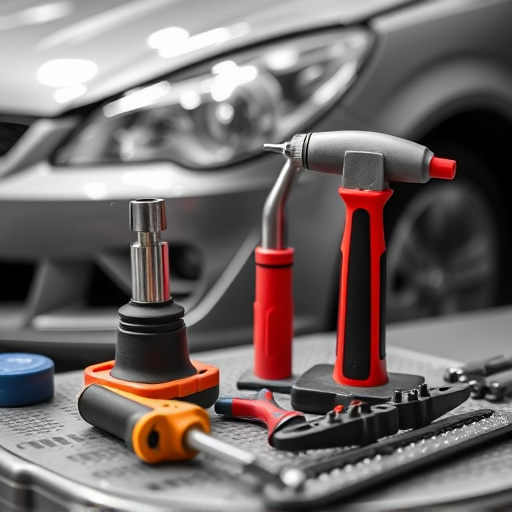Waterborne paint technology is transforming auto body repair, providing a faster, more efficient, and environmentally friendly alternative to traditional solvent-based paints. Its key benefits include quicker drying times, improved coverage, reduced turnaround for repairs, less material waste, and lower emissions, all contributing to significant time and cost savings for repair shops. This technology allows businesses to increase productivity, reduce operational expenses, and attract a broader customer base with competitive pricing, while also fostering a safer working environment.
Waterborne paint technology is transforming the way we approach coating applications, offering significant advantages over traditional methods. This innovative approach not only enhances environmental sustainability but also delivers substantial time and cost savings for various industries. By understanding the fundamentals of waterborne paints, businesses can unlock key benefits that improve efficiency, reduce waste, and optimize resources. Explore real-world applications to discover how this technology is revolutionizing painting processes across different sectors.
- Understanding Waterborne Paint Technology: The Basics
- Time and Cost Savings: Key Benefits of Adopting Waterborne Paints
- Real-World Applications: Where Waterborne Paint Technology shines
Understanding Waterborne Paint Technology: The Basics

Waterborne paint technology is a revolutionary advancement in the automotive industry, transforming traditional painting methods and offering significant advantages for auto body repair and vehicle bodywork. Unlike solvent-based paints, waterborne paints utilize water as their primary carrier instead of toxic solvents. This simple yet innovative shift has profound implications, especially when it comes to saving time and money in collision repair services.
The technology involves complex emulsions where pigment particles are suspended in water. This unique formulation allows for a more efficient painting process. Waterborne paints offer improved flow and spread during application, leading to reduced drying times and better coverage. In auto body repair, this translates into faster turnaround times, which not only benefits repair shops by increasing productivity but also saves customers from extended periods without their vehicles. Moreover, waterborne paint technology is environmentally friendly, reducing the need for harsh solvents and contributing to a safer workplace for professionals in the vehicle bodywork sector.
Time and Cost Savings: Key Benefits of Adopting Waterborne Paints

Adopting waterborne paint technology offers significant advantages for both businesses and consumers in the auto repair industry, specifically within car body shops and vehicle collision repair services. The primary benefit lies in the substantial time and cost savings it delivers. Waterborne paints dry faster than traditional counterparts, reducing the overall painting process duration by a considerable margin. This speed enhancement translates to increased productivity, allowing auto repair shops to service more vehicles in less time.
Furthermore, waterborne paint technology offers long-lasting durability and excellent coverage, which means fewer coats are needed to achieve a seamless finish. This reduction in material usage not only minimizes waste but also lowers the cost of supplies for car body shops. By adopting this innovative approach, auto repair services can enhance their operational efficiency, reduce expenses, and potentially offer competitive pricing to attract more clients.
Real-World Applications: Where Waterborne Paint Technology shines

Waterborne paint technology has gained significant traction across various industries due to its versatility and remarkable benefits. One area where it truly shines is in the realm of auto bodywork and vehicle dent repair. In a typical vehicle body shop, the traditional solvent-based paints often involve cumbersome preparation processes, including extensive sanding and cleaning, which can significantly eat into valuable time and labor resources.
In contrast, waterborne paint technology streamlines these processes by offering superior flow and fast drying times. This means that repairs on cars, from minor dents to major crash damage, can be completed faster, reducing downtime for customers and optimizing workflow in the vehicle dent repair process. Moreover, the reduced odor and lower volatile organic compound (VOC) emissions make waterborne paints a more environmentally friendly choice, contributing to a healthier working environment in auto bodywork shops.
Waterborne paint technology offers a compelling solution for businesses seeking significant time and cost savings in their painting operations. By leveraging this innovative approach, companies can streamline processes, reduce material waste, and cut down on labor expenses, all while achieving high-quality finishes. The versatility of waterborne paints allows them to be applied in various industries, from automotive to construction, making it a game-changer for efficient, sustainable, and cost-effective painting solutions.

